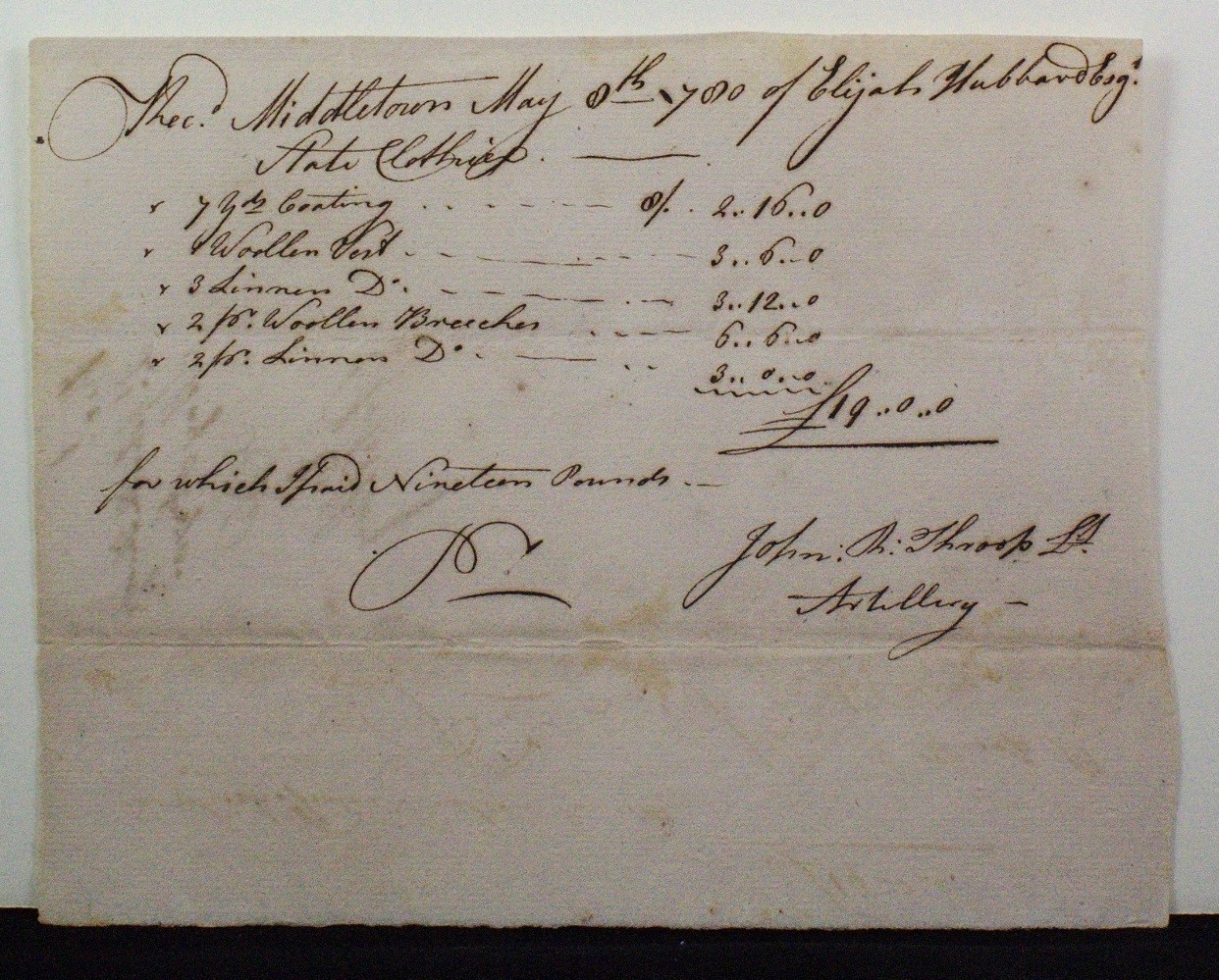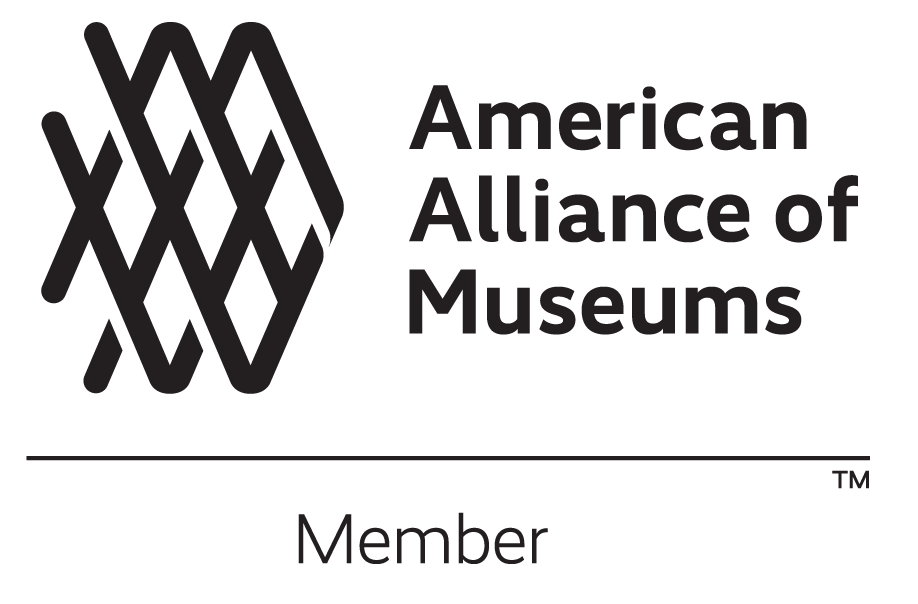Manuscript Receipt for Clothing for the Continental Army
by Saga Beus
Elijah Hubbard Esq. for Lt. John Throop. May 8, 1780
6 1/16 x 7 6/8 in.
Fraunces Tavern Museum, TR2019.01.079.
Gift of Kent D. and Tina K. Worley
During the Revolutionary War, Connecticut was known as the Provision State and while it was one of the smallest states, Connecticut contributed more food, provisions, and canons to the Continental Army than any other. Its agricultural surplus and manufacturing centered economy, along with its advantageous location between New York and Boston made it an ideal depot for military supplies. Under Governor Trumbull, nine regional commissaries were organized in Connecticut to gather supplies for the troops. His son, Joseph Trumbull, led the Commissary Department and George Washington was so impressed by his efforts that he later became the first commissary general of the Continental Army.
This manuscript receipt with supplies signed for by Lt. John Throop, an officer in the 2nd Continental Artillery Regiment under Colonel John Lamb, shows that Elijah Hubbard collected coating, a woolen vest, linens, and woolen breeches worth 19 pounds. These items of clothing were collected from Middletown, Connecticut, where Hubbard lived. This manuscript reflects Hubbard’s role as the state clothier of Connecticut, a job he was given in May of 1779. Previously, in 1777, Hubbard was assigned to be a commissary for the state, in charge of acquiring provisions, canons, and other goods for the Continental Army. He was also a lawyer and merchant in Middletown and New London. Hubbard later served as a member of the Connecticut General Assembly.
This is one of several manuscripts recently donated to the Fraunces Tavern Museum that detail the collection of supplies for the revolutionary war effort in Connecticut. The Continental Army experienced supply shortages throughout the war, so contributions from manufacturers and farmers was critical. This receipt was for a very small amount of clothing, reflecting the often limited supplies that were being collected. The shortage of funds and lack of established supply routes added to the difficulty of maintaining the Continental Army. Despite the enormous financial difficulties that the Continental Congress and Army faced, receipts like this one give insight into how individual towns and communities supported the fight for independence.





